Some people end up on this blog by randomly clicking around or searching, and those people typically aren’t aware of what “VIP Style” really is. So here’s a brief document to give you an idea of the origin and general style that we call, VIP.
VIP car is very simple. Usually pronounced V-I-P (vee-eye-pee) and meaning Very Important Person, the true pronunciation is VIP, or bippu, where it’s pronounced like a word (“vip” like whip). Cars that fit into the VIP category are predominantly rear wheel drive Japanese luxury platforms such as the Celsior, Cima, President, Cedric/Gloria, and Crown, just to name a few. These cars are usually the more expensive models and are usually purchased by the more affluent car owners. It’s not a VIP Car unless it starts with one of these cars. Many VIP purists will not consider any other platforms as VIP, even though other cars can take the styling cues from the larger VIP sedans. This is commonly known as VIP Styling.
United States enthusiasts use USDM equivalents, such as the Lexus GS and LS series and Infiniti Q45.
●History:
VIP cars stated approximately twenty two or twenty three years ago in Japan. However, they were not known as VIP cars.
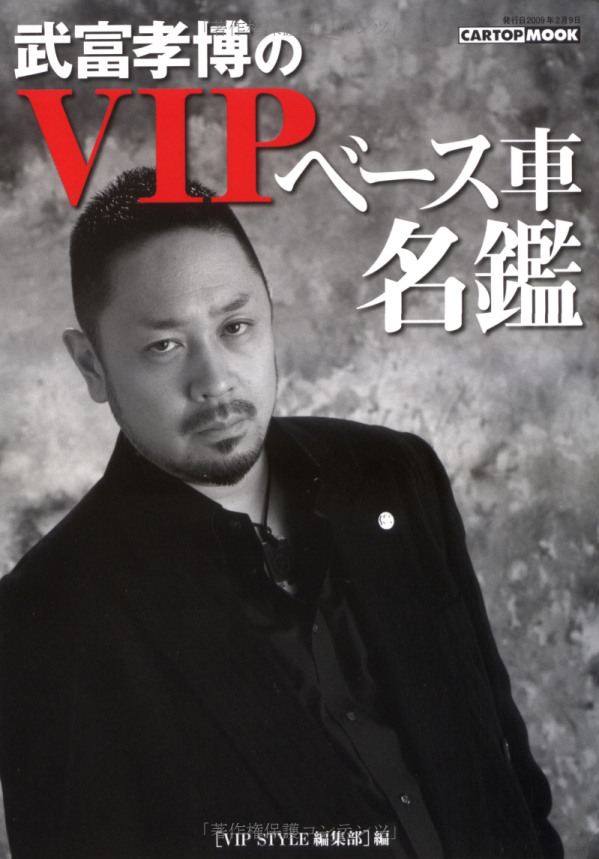
VIP cars came from a team named Black Cockroach in Wakayama Prefecture. That team’s cars were published in the national car magazine for the first time in Japan. The Black Cockroach had black Cima, Cedric, Celsior and Crown, which were very unique and exemplified the owner’s personalities. Afterwards, a team named VIP Company evolved that belonged to Taketomi-san, the eventual owner of Junction Produce, a leader in VIP styling in Japan. It was popular in Osaka Sooner and later, Sendai city in Miyagi prefecture. The popularity of VIP cars spread to Sendai city and Young Auto magazine, which brought Chibaragi, a name of remodeling cars, to the public. Before naming VIP Car, those cars including racing, motorcycle gang and remodeled racing cars were called a Haiso car (high society salon cars), a Kowamote car (coercive atmosphere car) and an Oshidashi car (push car). The Young Auto established a corner of the customizing scene by restyling luxury cars. They coined named VIP CLUB when the owners displayed their remodeled luxury cars. These cars would become what we know as VIP.
VIP Style modifications and history have often been linked
to the yakuza. It is claimed that VIP Style came to be due to the risk of
gangsters riding around in high-profile European sedans like the Mercedes
S-Class or BMW M-Series. The attention could either bring about police action
or retaliation from rival gangs. By using Japan domestic market cars with
modifications associated with the creation of limousines, gangsters could avoid
detection by the police and rival gangs.
Both Osaka street racers and Kanto area Bosozoku gangs
adopted VIP Style in different ways. Osaka street racers, after suffering
numerous police crackdowns on the Hanshin Expressway in the early 1990‘s,
turned to sedans after police targeted sport compacts as a way to cruise while
remaining incognito. Many design cues were taken from Mercedes-AMG cars. Kanto
area bosozoku gangs took a somewhat different approach, by modifying sedans
with cut coils and mufflers and were often bold and loud. They also drove recklessly,
such as causing traffic jams and avoiding paying tolls. To mimic their yakuza
counterparts, “Bos Bippus” used large black sedans. VIP Style modifications and
history have often been linked to the yakuza. It is claimed that VIP Style came
to be due to the risk of gangsters riding around in high-profile European
sedans like the Mercedes S-Class or BMW M-Series. The attention could either
bring about police action or retaliation from rival gangs. By using Japan
domestic market cars with modifications associated with the creation of
limousines, gangsters could avoid detection by the police and rival gangs.
Both Osaka street racers and Kanto area Bosozoku gangs
adopted VIP Style in different ways. Osaka street racers, after suffering
numerous police crackdowns on the Hanshin Expressway in the early 1990‘s,
turned to sedans after police targeted sport compacts as a way to cruise while
remaining incognito. Many design cues were taken from Mercedes-AMG cars. Kanto
area bosozoku gangs took a somewhat different approach, by modifying sedans
with cut coils and mufflers and were often bold and loud. They also drove
recklessly, such as causing traffic jams and avoiding paying tolls. To mimic
their yakuza counterparts, “Bos Bippus” used large black sedans.

VIP cars came from a team named Black Cockroach in Wakayama Prefecture. That team’s cars were published in the national car magazine for the first time in Japan. The Black Cockroach had black Cima, Cedric, Celsior and Crown, which were very unique and exemplified the owner’s personalities. Afterwards, a team named VIP Company evolved that belonged to Taketomi-san, the eventual owner of Junction Produce, a leader in VIP styling in Japan. It was popular in Osaka Sooner and later, Sendai city in Miyagi prefecture. The popularity of VIP cars spread to Sendai city and Young Auto magazine, which brought Chibaragi, a name of remodeling cars, to the public. Before naming VIP Car, those cars including racing, motorcycle gang and remodeled racing cars were called a Haiso car (high society salon cars), a Kowamote car (coercive atmosphere car) and an Oshidashi car (push car). The Young Auto established a corner of the customizing scene by restyling luxury cars. They coined named VIP CLUB when the owners displayed their remodeled luxury cars. These cars would become what we know as VIP.
The VIP scene eventually lead to the establishment of VIP Car Magazine., a company and magazine that was started by a publisher from Young Auto Magazine. VIP Car Magazine showed remodeling luxury cars called a VIP Car. The VIP Car magazine has been distributed for twenty years, mainly in Japan. In Osaka, there a VIP company team, which dressed up VIP cars and started by Taketomi-san, was a pioneer who drove the popularity of VIP cars approximately twenty three years ago.
●VIP Characteristics:
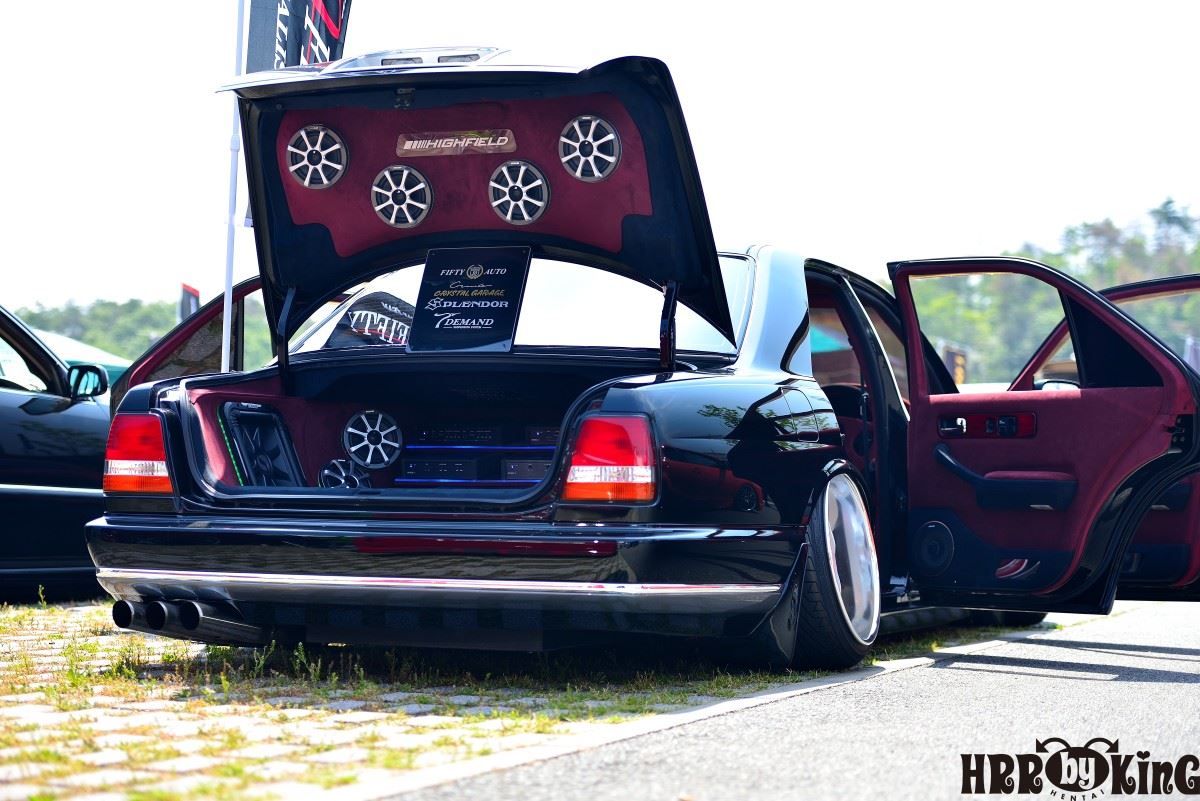 VIP cars can loosely be translated to “Low and Wide”. Many have argued that VIP cars can include European and even American cars. These can be considered VIP Style as long as they follow in the VIP guidelines, but they will never be VIP Platforms. Some general characteristics of VIP Style are: Large/wide wheels (many times with big lips and low offsets) that are flush to the fender. Stretched tires in order to tuck the wheels under the fenders. Exhausts that stick out past the rear bumper (although not so much emphasized these days), a full bodykit or lip kit, glossy (also candy, metallic, pearl) paint and a lowered ride height (usually with coilovers or air ride). In Japan, cars use primarily coilovers. It is not uncommon to see extreme negative camber on many vip cars.
VIP cars can loosely be translated to “Low and Wide”. Many have argued that VIP cars can include European and even American cars. These can be considered VIP Style as long as they follow in the VIP guidelines, but they will never be VIP Platforms. Some general characteristics of VIP Style are: Large/wide wheels (many times with big lips and low offsets) that are flush to the fender. Stretched tires in order to tuck the wheels under the fenders. Exhausts that stick out past the rear bumper (although not so much emphasized these days), a full bodykit or lip kit, glossy (also candy, metallic, pearl) paint and a lowered ride height (usually with coilovers or air ride). In Japan, cars use primarily coilovers. It is not uncommon to see extreme negative camber on many vip cars.
•Substantial body kits to achieve the “Wide” look
•Custom body work to accentuate the “Wide” look
•Custom video and audio components and installations
•Wood grain interiors with additional trays and extensions on the dash. Custom seats and mats
•Additional and upgraded internal and external lighting
•Louder exhausts with larger tips
•Engine/performance work (though not as popular)
●VIP Culture:
When VIP car enthusiasts in Japan build their car, they immerse themselves in the culture of VIP Car. Accessories like Noburi Flags, clothing, lighters, teddy bears, fans, and every accessory that a company makes are purchased and proudly displayed. Many automotive events and gatherings in Japan are steeped in the tradition of the VIP culture. Simple gatherings of enthusiasts can turn into major events. As usual in the Japanese culture, the cars are the stars, but socializing and even food are main attractions. VIP Car has a sense of pride within the Japanese community on its luxury vehicles.
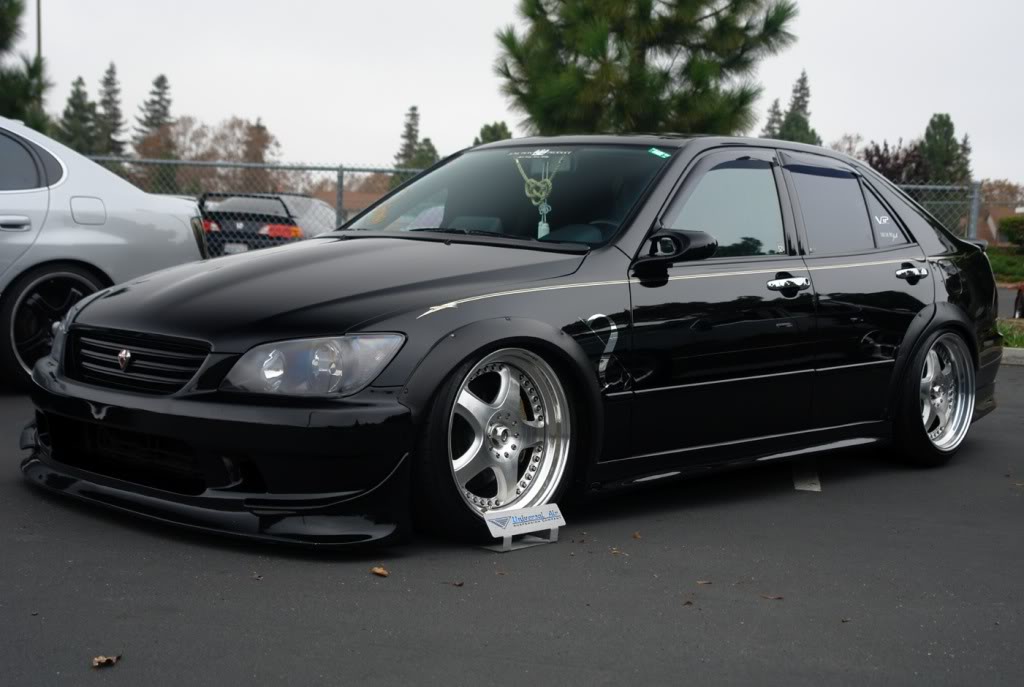 VIP styling is taking the aspects that was started in Japan with the VIP Cars and merging them onto cars that aren’t really considered VIP car platforms. Automotive enthusiasts adapted beyond luxury sedans, utilizing minivans (Odyssey and Previas) and Kei cars (Vitz, Scion, and other econo-box cars). One advantage presented to enthusiasts is that such modifications can make a car luxurious without being expensive and many other vehicles (G35, IS300, 300Zs) that have been heavily influenced by the VIP Style. That also has trickled into our US market with the larger cars like the Chrysler 300C and Dodge Magnum.. European cars can also be influenced by the VIP cars.
VIP styling is taking the aspects that was started in Japan with the VIP Cars and merging them onto cars that aren’t really considered VIP car platforms. Automotive enthusiasts adapted beyond luxury sedans, utilizing minivans (Odyssey and Previas) and Kei cars (Vitz, Scion, and other econo-box cars). One advantage presented to enthusiasts is that such modifications can make a car luxurious without being expensive and many other vehicles (G35, IS300, 300Zs) that have been heavily influenced by the VIP Style. That also has trickled into our US market with the larger cars like the Chrysler 300C and Dodge Magnum.. European cars can also be influenced by the VIP cars.●1/24 Vip Cars
Nowadays 'Aoshima' company produces 1/24 plastic model vip car kits (with modified suspension, decals, wheels, bodykits). Aoshima has a licenses of vip car boutiques and studios for producing their bodykits and stuff, such as: Junction Produce, K-Break, Mode Parfume, Aimgain, Vlene, D.A.D and many others. Also 'Tamiya' and 'Fujimi' produces stock vip platform cars (Lexus LS400/Toyota Celsior, Nissan Cedric, Infiniti Q45). Occasionally some kits are restocking or rereleasing, but mostly don't. Sometimes hard to find needed discontinued kit even at online auctions but if you find needed car, price for that rare kit may discourage you. Otherwise you always can to buy stock vip platform car, modify suspension for low fitment and put aftermarket wheels on it (SSR, VIP Modular, Work, OZ, etc).
Edited and supplemented by me (RiZ).



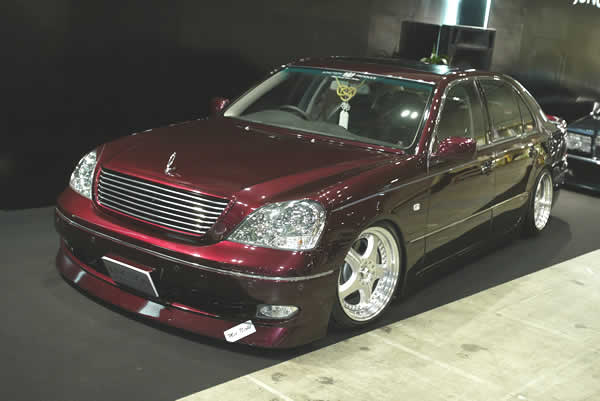
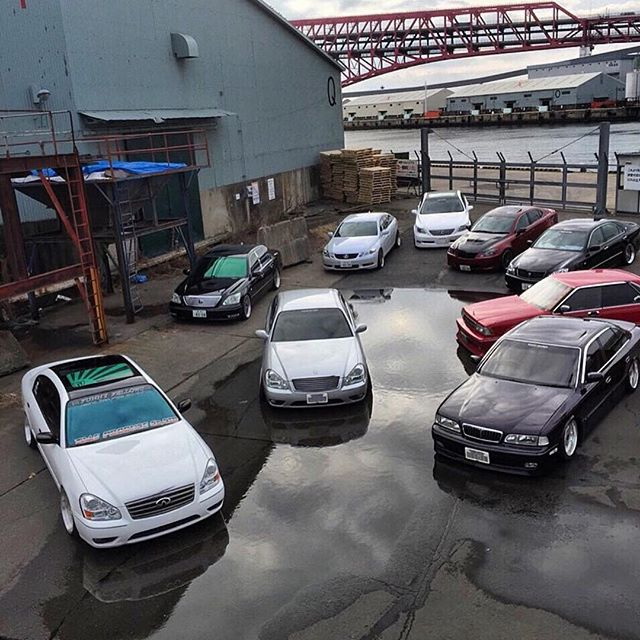
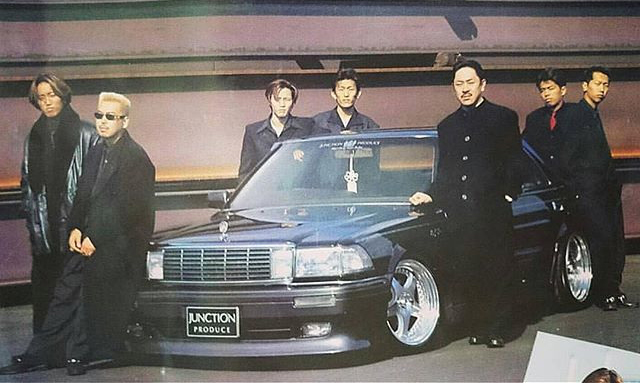
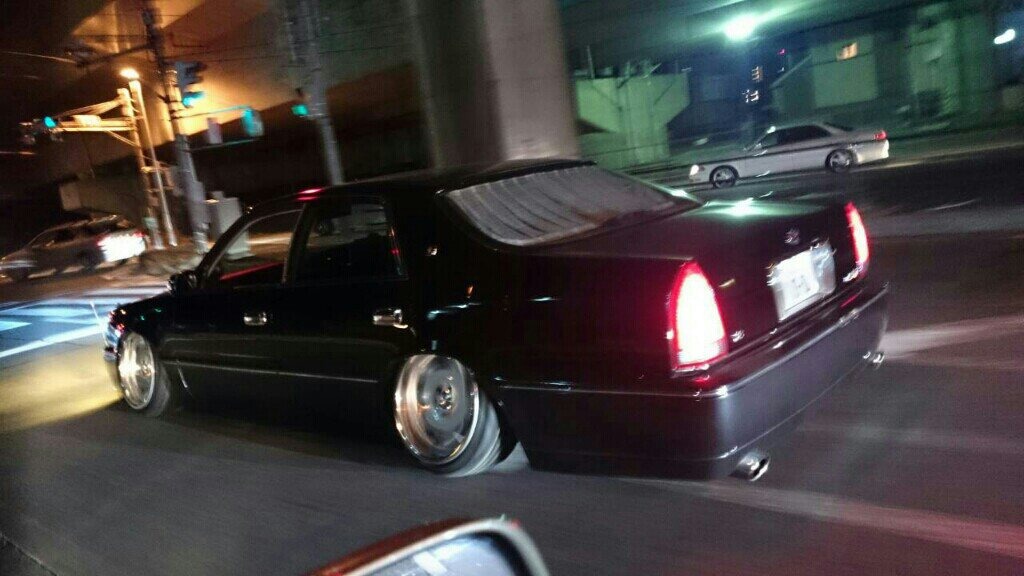
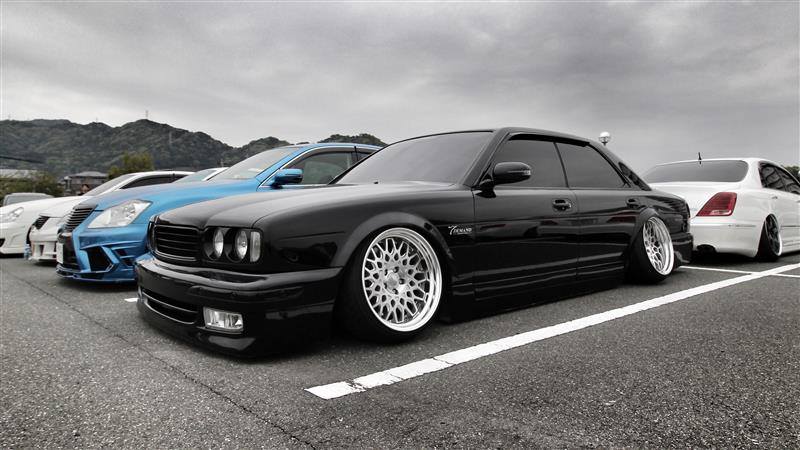


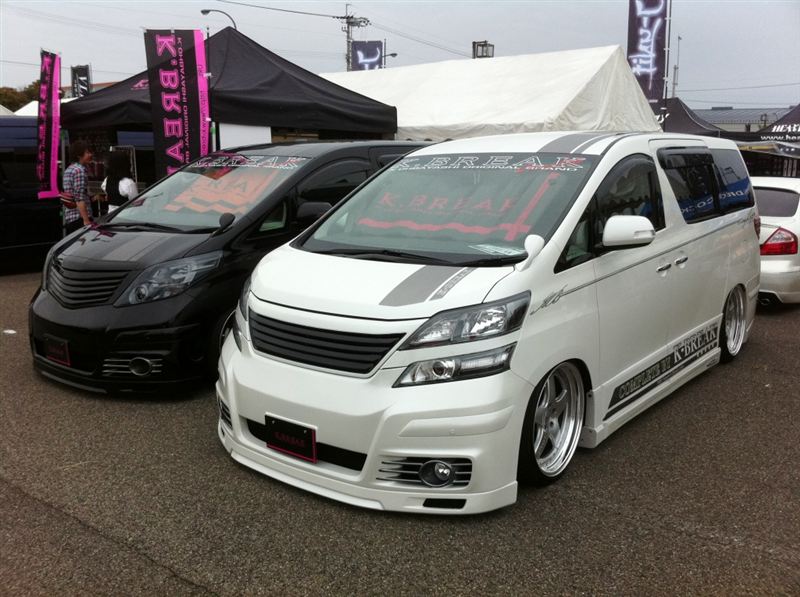
hello, awesome post, btw do you know the origin or story of the photo of the black toyota crown s130 with the yakuzas? (3rd photo) :)
ReplyDeleteHi! Thanks for visiting my blog. As far as I know, this is Taketomi-san himself (at the front left side of the car), the creator and owner of Junction Produce, and one of his cars.
DeleteUnfortunately, i have no more information about this photo :(